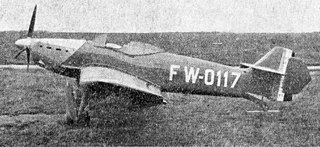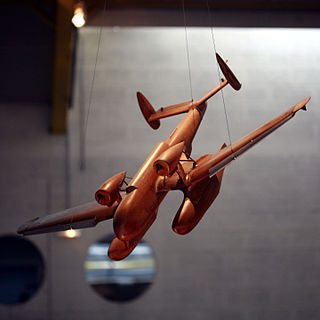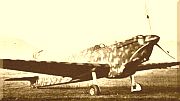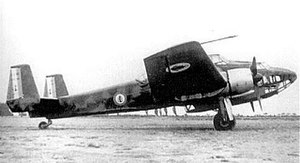Related Research Articles

The Dewoitine D.500 was an all-metal, open-cockpit, fixed-undercarriage monoplane fighter aircraft designed and produced by French aircraft manufacturer Dewoitine.

The Amiot 354 was the last in a series of fast, twin-engine bombers which fought with the French Air Force in limited numbers during the Battle of France.

The Bloch MB.210 and MB.211 were the successors of the French Bloch MB.200 bomber developed by Société des Avions Marcel Bloch in the 1930s and differed primarily in being low wing monoplanes rather than high wing monoplanes.

The Bloch MB.162 was a French four-engine, long-range bomber developed by Société des Avions Marcel Bloch in the late 1930s. Only a single prototype was built; after capture by German forces, it was pressed into service with the Luftwaffe as a transport.

The Potez 630 and its derivatives were a family of twin-engined, multirole aircraft developed for the French Air Force in the late 1930s. The design was a contemporary of the British Bristol Blenheim and the German Messerschmitt Bf 110.
The Bréguet 690 and its derivatives were a series of light twin-engine ground-attack aircraft that were used by the French Air Force in World War II. The aircraft was intended to be easy to maintain, forgiving to fly, and capable of 480 km/h (300 mph) at 4,000 m (13,000 ft). The type's sturdy construction was frequently demonstrated and the armament was effective. French rearmament began two years later than that in Britain and none of these aircraft were available in sufficient numbers to make a difference in 1940.

The Blériot 127 was a French bomber aircraft of the 1920s and 1930s, developed from the Blériot 117 escort fighter. It was a large monoplane of conventional configuration that featured open gunner's positions in its nose and at the rear of its two underwing engine nacelles. The wing airfoil was of sufficient thickness that these latter positions could be accessed from the fuselage in flight.

The Loire-Nieuport LN.40 aircraft were a family of French naval dive-bombers for the Aeronavale in the late 1930s, which saw service during World War II.

The Potez 39 was a French two-seat single-engined parasol wing monoplane reconnaissance and observation aircraft of the 1930s.

The Loire-Nieuport 10 was a 1930s French prototype long-range maritime reconnaissance and combat floatplane produced by Loire-Nieuport, a joint venture between Loire Aviation and Nieuport-Delage. It was an attempt to answer the requirements for the Navy's programme Hydravion éclaireur de combat for a large floatplane capable of acting as a torpedo bomber or reconnaissance aircraft.
The Bréguet 790 Nautilus was a prototype French three-seat coastal patrol flying-boat designed and built by Bréguet Aviation to meet a requirement from the French navy.

The Caproni Ca.335 Maestrale (Mistral) was an Italian single-engined two-seat fighter-bomber/reconnaissance aircraft of the 1930s.
The Bréguet 482 was a French four-engined heavy bomber aircraft designed just prior to the outbreak of the Second World War with two prototypes nearing completion when Germany invaded France in 1940, one of which was flown after the end of the war as an experimental platform.

The SNCAO CAO.600 was a French prototype twin-engined torpedo-bomber of the Second World War. It was intended to operate from two new aircraft carriers of the French Navy, but only a single example had been completed and flown when the surrender of France in June 1940 ended development of the aircraft.
The Dewoitine D.750 was a prototype French twin-engined torpedo bomber. It was designed prior to the outbreak of the Second World War to operate from the aircraft carriers of the French Navy, but only a single example was completed, with development ended by France's defeat by Germany in June 1940.

The SNCAC NC.150 was a prototype French high-altitude bomber aircraft designed and flown just prior to the start of the Second World War. It was a twin-engined monoplane, with a third engine driving a supercharger. Although testing was promising, and orders were planned for a modified version as a back-up for the Lioré et Olivier LeO 45 and Amiot 354 bombers, the surrender of France in June 1940 ended development with only the single example being built.

The SNCAO 200, sometimes written CAO.200, was a prototype French single seat fighter aircraft of the 1930s. It was a single engined monoplane intended to compete with the Dewoitine D.520, but was unsuccessful, only a single example being built.

The Bréguet 410 was a French bomber of the early 1930s. Not many of these twin-engined sesquiwing biplanes were built. At least one Breguet 413, one of its variants, was sold to the Spanish Republican Air Force during the Spanish Civil War.
The Potez 220 was a prototype French twin-engined, three-seat reconnaissance and army cooperation aircraft. Two examples were built in 1939, but no production followed.
The Potez 230 was a French lightweight single-seat, single-engined fighter aircraft. One prototype was built and flew in 1940, but no production followed, with the prototype being captured and shipped to Germany for study.
References
- Green, William (1967). War Planes of the Second World War: Volume Seven Bombers and Reconnaissance Aircraft. London: Macdonald.
- Green, William (1967). War Planes of the Second World War: Volume Eight Bombers and Reconnaissance Aircraft. London: Macdonald.